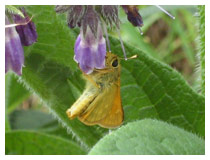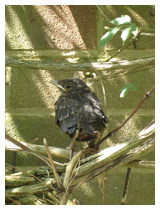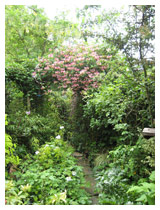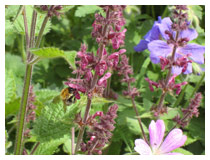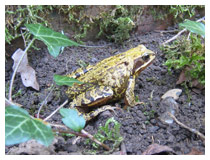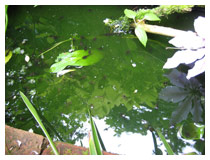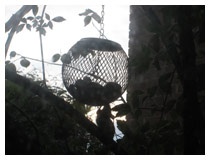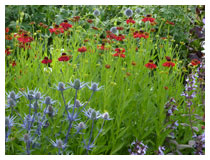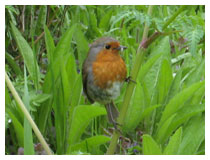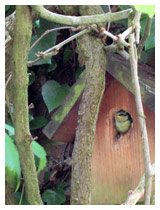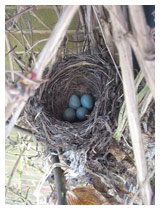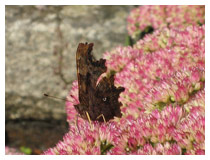Wildlife Friendly Garden Design
Please click on any of the images below to view them in more detail.
Designing your garden to be friendly to wildlife can give you the pleasure of watching birds, butterflies and other animals, and also helps support a healthy ecological balance in the garden.
Having a frog friendly garden means that you can have helpers in keeping slugs at bay. Birds are good at picking insect pests from bark and leaves. Ladybird beetles feed on aphids and help keep the roses and vegetable clear.
Having a corner of the garden which provides shelter for wildlife is of benefit to the whole garden, or wildlife can be considered in the design of structure and planting all around the garden.
My qualifications in biology and ecology combine well with my garden design skills to enable me to produce wildlife gardens, or simply to encourage more ecological richness in any garden - whilst making the garden a pleasant place for humans as well!
The pictures above, taken in gardens which I have designed, show animals as they are busy going about their lives, in the background, making the garden a richer and more interesting place.
The pictures of the garden path and of the birds illustrate the importance of twiggy shrubs and trees in providing a safe habitat for smaller birds – where visiting sparrow hawks and magpies cannot reach them or their nests. The garden design also provides places for insects, frogs and hedgehogs to hibernate.
The butterflies and bees are attracted by the presence of food plants – and plants can be chosen to provide nectar over as long a period as possible, as well as food for larvae and safe places to pupate.
By the way, there is wildlife in all my garden pictures – it’s just mostly out of sight!
I have a degree in biology, specialising in ecology and botany and am also a qualified garden designer. I have designed, advised on, and worked on the production and care of wildlife friendly gardens and of wildlife areas within gardens in Hertfordshire, Bedfordshire, North London, South London and Kent.
I am skilled in selecting plants which will thrive in local conditions and that provide conditions to suit the local wildlife. My wildlife garden designs include layouts, structures and planting that are wildlife friendly.

